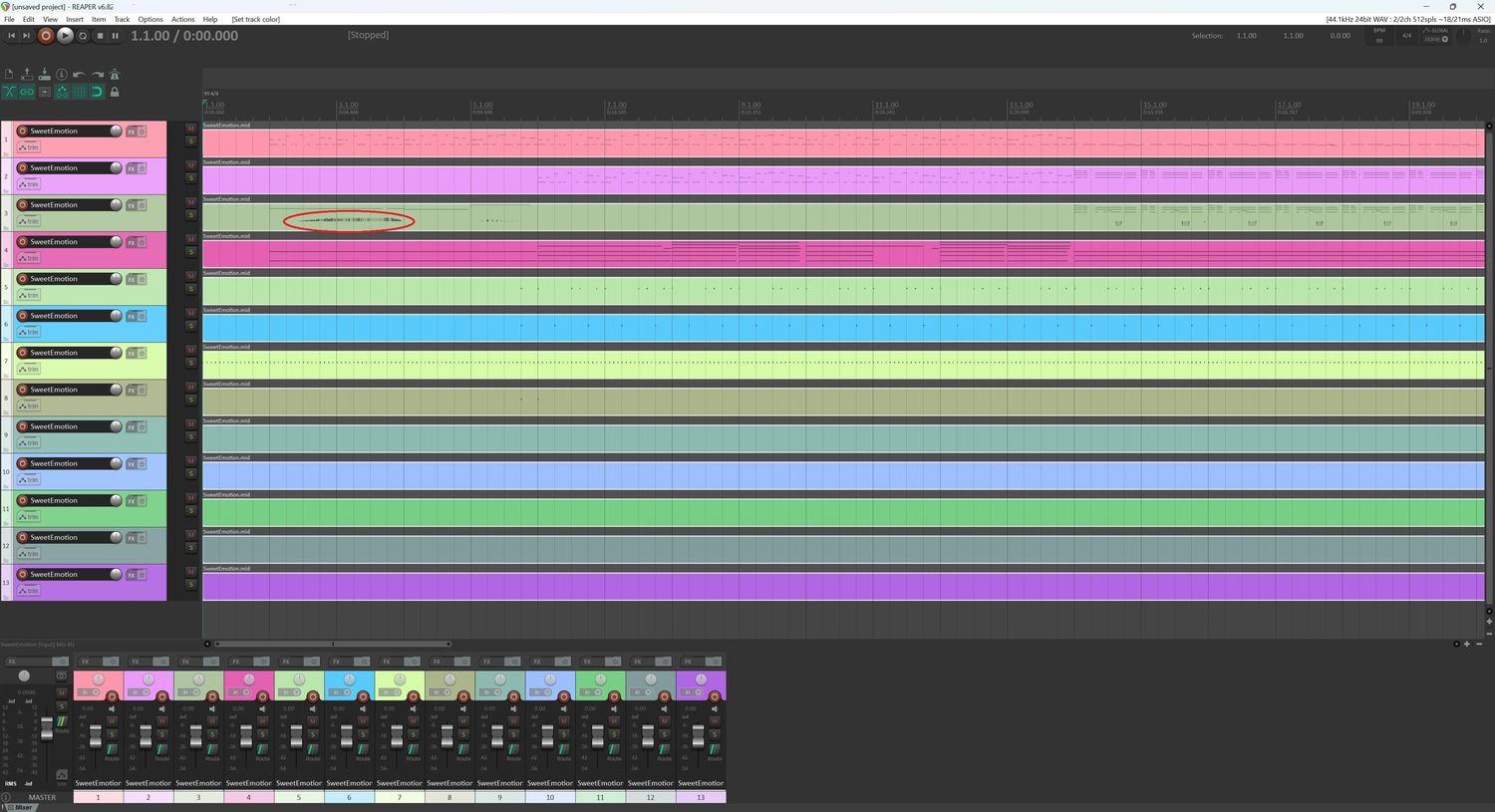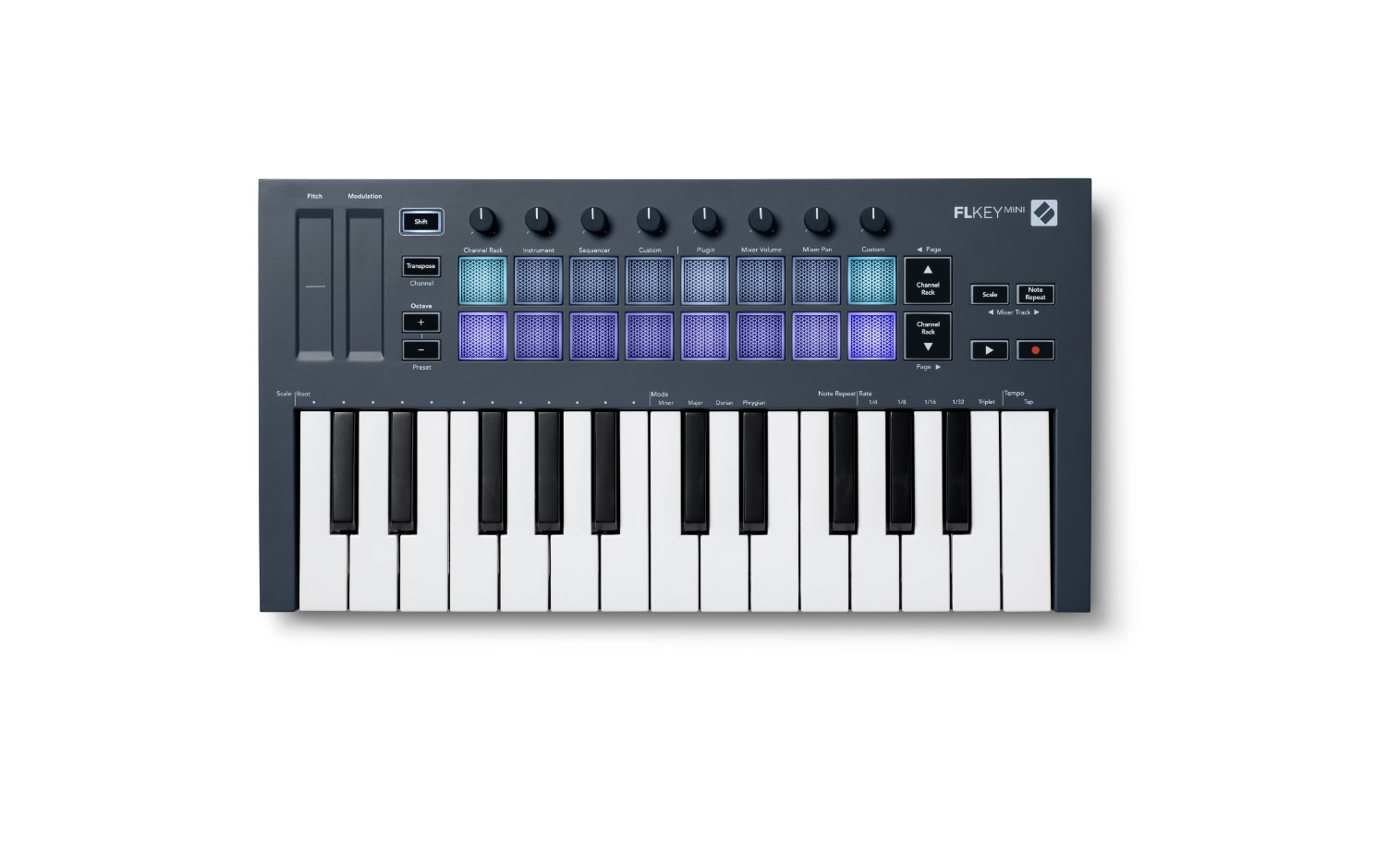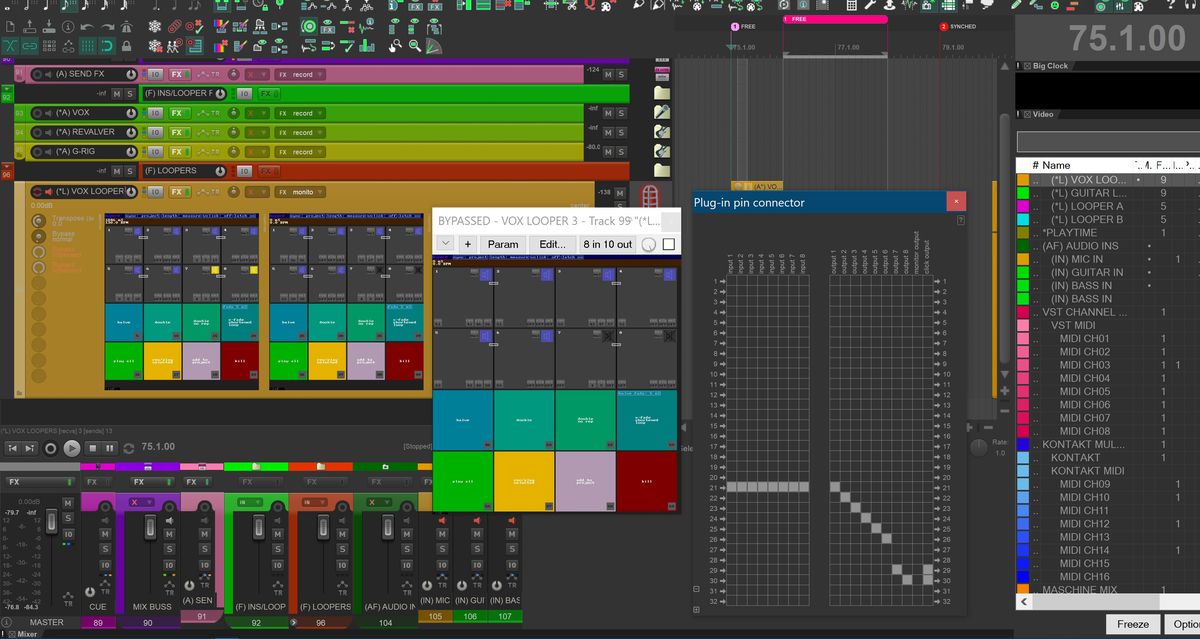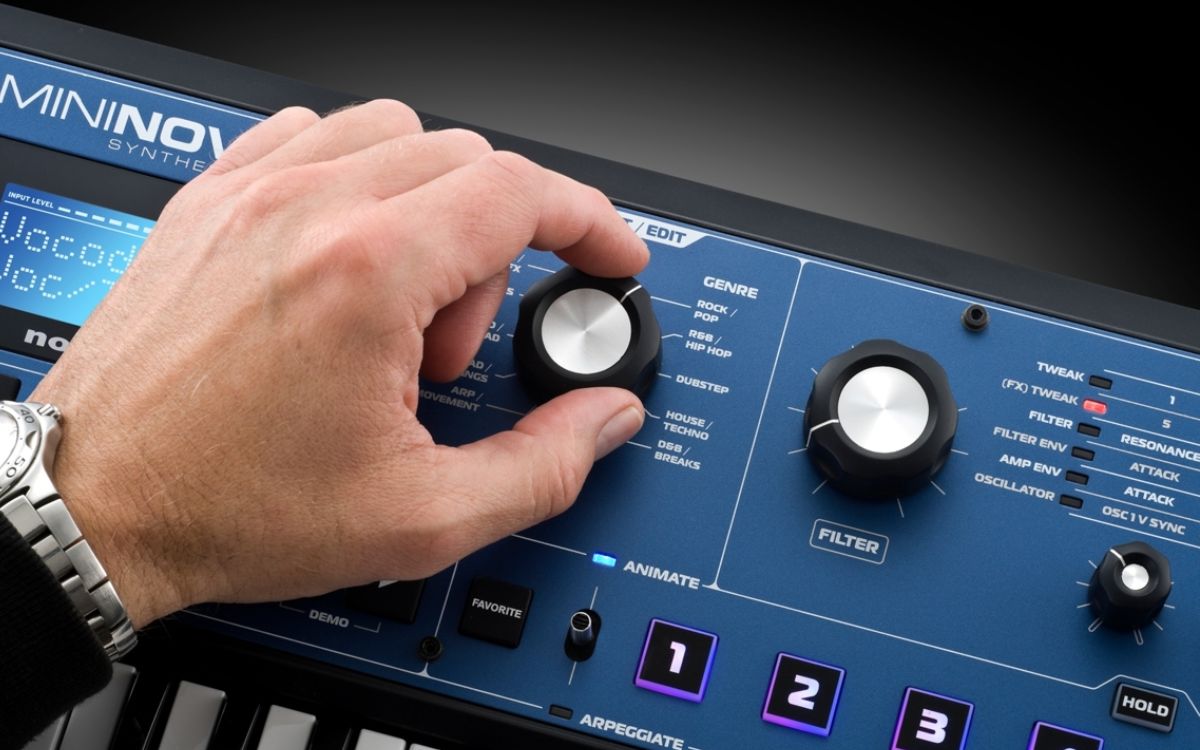Home>Production & Technology>MIDI>How To Set MIDI View Grid Value In Reaper


MIDI
How To Set MIDI View Grid Value In Reaper
Published: February 19, 2024
Learn how to set the MIDI view grid value in Reaper with our step-by-step guide. Optimize your MIDI editing process for smoother workflow.
(Many of the links in this article redirect to a specific reviewed product. Your purchase of these products through affiliate links helps to generate commission for AudioLover.com, at no extra cost. Learn more)
Table of Contents
Introduction
MIDI, which stands for Musical Instrument Digital Interface, is a vital component of modern music production. It allows musicians and producers to communicate musical information between devices, enabling the creation and manipulation of electronic music. Within digital audio workstations (DAWs) like Reaper, MIDI plays a pivotal role in shaping musical compositions.
One essential feature of MIDI editing in Reaper is the MIDI view grid, which provides a visual reference for aligning and quantizing musical notes. The grid value determines the resolution at which MIDI events are displayed and edited, influencing the precision and feel of the musical performance. Understanding how to set the MIDI view grid value in Reaper is crucial for achieving the desired musical arrangement and ensuring a seamless editing experience.
In this article, we will delve into the process of accessing and setting the MIDI view grid value in Reaper. By gaining proficiency in this aspect of MIDI editing, you will be empowered to fine-tune your musical creations with precision and efficiency. Let's embark on this journey to unlock the potential of MIDI editing in Reaper and elevate your music production endeavors.
Accessing MIDI View Grid Value in Reaper
Accessing the MIDI view grid value in Reaper is a fundamental step in refining the precision and feel of MIDI-based musical compositions. The grid value serves as a visual guide for aligning and manipulating musical notes within the MIDI editor, allowing for seamless editing and quantization. To access the MIDI view grid value in Reaper, follow these steps:
-
Open the MIDI Editor: After creating or importing a MIDI item in your Reaper project, double-click on the MIDI item to open it in the MIDI editor. This action will reveal the MIDI notes and events within the item, providing a canvas for MIDI editing.
-
Locate the Grid Settings: Within the MIDI editor window, navigate to the top toolbar or menu, where you will find the grid settings. These settings are typically represented by a grid icon or a dropdown menu labeled "Grid."
-
Adjust the Grid Value: Click on the grid icon or dropdown menu to access the grid settings. Here, you can select the desired grid value from a list of predefined options or enter a custom grid value tailored to your specific editing requirements. The grid value is typically denoted in musical time divisions, such as beats, bars, or subdivisions of a beat.
-
Customize the Grid Snap: In addition to setting the grid value, you can customize the grid snap behavior to align MIDI events to the grid with precision. The grid snap options, often located adjacent to the grid value settings, allow you to define how MIDI events adhere to the grid during editing operations.
-
Fine-Tune the Display: Depending on your editing preferences, you may have the option to adjust the visual display of the grid, such as toggling grid lines, changing grid colors, or enabling snap-to-grid visual cues. These customization features enhance the visibility and usability of the MIDI view grid, catering to individual workflow preferences.
By following these steps, you can effortlessly access and tailor the MIDI view grid value in Reaper, empowering you to craft musical arrangements with meticulous attention to detail. The ability to navigate and manipulate the MIDI view grid is a cornerstone of efficient MIDI editing, enabling you to achieve rhythmic precision and musical cohesion within your compositions. With a firm grasp of accessing the MIDI view grid value, you are poised to embark on a journey of creative exploration and technical mastery within the realm of MIDI editing in Reaper.
Setting MIDI View Grid Value in Reaper
Setting the MIDI view grid value in Reaper is a pivotal aspect of refining the precision and feel of MIDI-based musical compositions. By customizing the grid value, you can align and manipulate musical notes with accuracy, thereby shaping the rhythmic structure and overall musical expression. Here's a detailed exploration of the process of setting the MIDI view grid value in Reaper:
1. Accessing Grid Settings
Upon opening the MIDI editor in Reaper, you can access the grid settings by navigating to the top toolbar or menu. The grid settings are typically represented by a grid icon or a dropdown menu labeled "Grid," serving as the gateway to configuring the grid value.
2. Selecting the Grid Value
Within the grid settings interface, you have the opportunity to select the grid value that best suits your editing requirements. Reaper offers a range of predefined grid values, including musical time divisions such as beats, bars, and subdivisions of a beat. This selection empowers you to tailor the grid resolution to align with the rhythmic intricacies of your musical composition.
3. Customizing Grid Snap Behavior
In conjunction with setting the grid value, you can customize the grid snap behavior to dictate how MIDI events adhere to the grid during editing operations. The grid snap options, often located adjacent to the grid value settings, allow you to define the level of precision at which MIDI events align with the grid, facilitating seamless editing and quantization.
4. Fine-Tuning Visual Display
To enhance the visual clarity and usability of the MIDI view grid, Reaper provides options to fine-tune the grid's visual display. This may include toggling grid lines, adjusting grid colors, or enabling snap-to-grid visual cues, all aimed at optimizing the visibility and functionality of the grid within the MIDI editor.
5. Exploring Custom Grid Values
In addition to selecting predefined grid values, Reaper offers the flexibility to input custom grid values tailored to specific musical contexts. This feature accommodates diverse rhythmic patterns and time signatures, allowing for precise alignment and manipulation of MIDI events according to the unique characteristics of your musical composition.
By engaging with the process of setting the MIDI view grid value in Reaper, you gain the ability to sculpt musical arrangements with meticulous attention to rhythmic detail. The customizable nature of the grid settings empowers you to align and manipulate MIDI events with precision, fostering a cohesive and expressive musical narrative within your compositions. This proficiency in setting the MIDI view grid value amplifies your creative potential and technical prowess, establishing a solid foundation for immersive exploration and innovation within the realm of MIDI editing in Reaper.
Conclusion
In conclusion, mastering the art of setting the MIDI view grid value in Reaper is a transformative endeavor for musicians and producers immersed in the realm of MIDI-based music production. The meticulous control and precision offered by the MIDI view grid empower creators to sculpt musical compositions with rhythmic coherence and expressive depth. By accessing and customizing the grid value, individuals can navigate the intricate landscape of MIDI editing with confidence and finesse, elevating their creative output to new heights.
The process of accessing the MIDI view grid value in Reaper serves as a gateway to visualizing and manipulating musical events within the MIDI editor. It provides a canvas for aligning notes, quantizing performances, and shaping the rhythmic nuances of a composition. This visual framework, governed by the selected grid value, acts as a guiding force, ensuring that musical elements harmonize seamlessly within the digital domain.
Furthermore, the ability to set the grid value in Reaper empowers creators to tailor the editing environment to suit the specific requirements of each musical endeavor. Whether working with intricate polyrhythms, dynamic grooves, or expansive soundscapes, the flexibility of the grid settings accommodates diverse musical contexts, fostering a symbiotic relationship between the artist's vision and the technological tools at their disposal.
As creators delve into the realm of MIDI editing and explore the intricacies of the MIDI view grid, they embark on a journey of artistic refinement and technical mastery. The grid value becomes more than a visual reference; it becomes a conduit for translating creative intentions into tangible musical expressions. With each adjustment of the grid value, creators refine the temporal fabric of their compositions, infusing them with a sense of rhythmic vitality and precision.
Ultimately, the proficiency in setting the MIDI view grid value in Reaper empowers creators to transcend the confines of traditional musical notation, delving into the realm of electronic music production with confidence and ingenuity. It is within this realm that the grid value becomes a collaborator, a silent partner in the creative process, aligning musical events with unwavering accuracy and providing a platform for boundless experimentation and sonic innovation.
In essence, the journey of setting the MIDI view grid value in Reaper transcends the realm of technical manipulation; it embodies the convergence of art and technology, where the rhythmic heartbeat of a composition finds its pulse within the digital domain. As creators harness the power of the MIDI view grid, they embark on a quest to shape musical narratives with precision, passion, and unwavering creativity, solidifying their presence within the ever-evolving landscape of modern music production.











